Introduction to Green Cheeked Conures
Green Cheeked Conures, scientifically known as Pyrrhura molinae, are vibrant and social birds native to South America, primarily found in the forests of Brazil, Bolivia, Argentina, and Paraguay. These small parrots are popular pets due to their playful demeanor, striking colors, and ability to bond closely with their human companions. Green cheeked conures are also renowned for their vibrant personalities and captivating behaviors, making them beloved companions for avian enthusiasts worldwide. As a pet owner, understanding Green cheeked conure behaviors is crucial for providing optimal care and fostering a strong bond. In this comprehensive guide, we delve into various aspects of green cheeked conure behavior, offering insights and tips to enhance your relationship with these charming birds.
Understanding Green Cheeked Conure Behaviors as Pets
When it comes to understanding the behavior of green cheeked conures, it’s essential to recognize the differences between males and females, much like African grey parrots. While both genders exhibit similar traits, such as intelligence and sociability, subtle distinctions may influence their behavior patterns.
Exploring Green Cheeked Conure Behaviors
As beloved companions, understanding the behavior of Green Cheeked Conures is crucial for their well-being and harmonious interaction with their owners. Below, we delve into various aspects of their behavior, drawing comparisons where applicable, particularly with the African Grey Parrot, focusing on both male and female characteristics.
Nesting Behavior
Nesting behavior is a natural instinct for Green Cheeked Conures, especially during the breeding season. They exhibit tendencies such as exploring confined spaces, shredding materials like paper or wood, and exhibiting heightened territorial behaviors.
Green Cheek Conure Nesting Box
Providing a suitable nesting box is essential for pet owners looking to accommodate their conure’s nesting instincts. A spacious and secure nesting box simulates the natural environment, encouraging breeding behaviors while ensuring the safety of the birds.
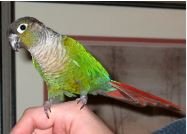
Decoding Body Language
Green Cheeked Conures communicate a wealth of information through their body language, from subtle movements to expressive gestures. Understanding their cues, such as raised crests indicating curiosity or fluffed feathers signaling contentment, fosters a deeper bond between owners and their feathered companions.
Feeding Behavior
A balanced diet is crucial for the health and vitality of Green Cheeked Conures. These omnivorous birds enjoy a diverse array of foods, including high-quality pellets, fresh fruits, vegetables, and occasional treats like nuts and seeds. Observing their feeding behavior provides insights into their preferences and nutritional needs, you can prefer following:
Pellets: Choose high-quality pellets specifically formulated for small parrots, preferably ones that are organic and free from artificial colors or additives. Brands like Harrison’s Adult Lifetime Fine or Roudybush Daily Maintenance Small are excellent options.
Fruits: Offer a variety of fresh fruits such as apples, bananas, grapes, berries, and oranges. Ensure that fruits are thoroughly washed and cut into bite-sized pieces to prevent choking hazards.
Nuts: Provide unsalted, raw nuts as occasional treats for your green cheeked conure. Suitable options include almonds, walnuts, pecans, and pistachios. Remove any shells and offer them in small quantities to avoid overindulgence.
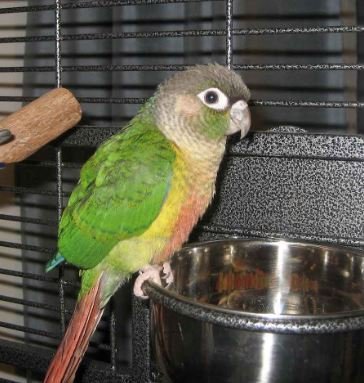
Molting Patterns
Molting is a natural process for birds, including Green Cheeked Conures, where old feathers are shed and replaced with new ones. Owners may notice increased preening and feather fluffing during this period, as the bird’s body adjusts to the molting process, ensuring optimal feather health and plumage.
Egg Laying Behavior
In breeding pairs, female Green Cheeked Conures may exhibit egg-laying behavior, accompanied by nesting instincts and hormonal changes. Providing appropriate nesting materials and monitoring their behavior closely can help ensure the well-being of both the female bird and any potential offspring.
Green Cheek Conure Aggression
While generally gentle and affectionate, Green Cheeked Conures may display aggression in certain situations, such as feeling threatened or territorial. Recognizing signs of aggression, such as lunging or biting, allows owners to address underlying causes and implement positive reinforcement techniques for behavioral management.
Mating Rituals
During the breeding season, Green Cheeked Conures engage in elaborate mating rituals, including courtship displays, vocalizations, and mutual preening. Understanding and respecting their natural instincts enhances the bonding experience between breeding pairs and their human caregivers.
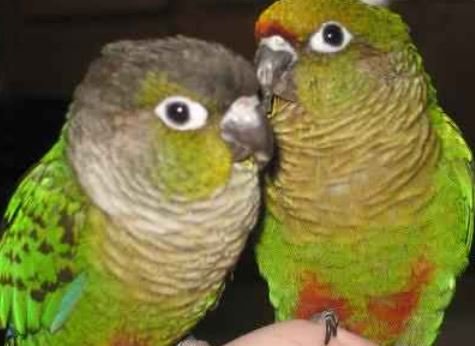
Breeding Behaviors
For experienced aviculturists, breeding Green Cheeked Conure behaviors can be a rewarding endeavor. Providing a suitable environment, nesting materials, and nutritional support are essential factors in successful breeding outcomes, ensuring the health and vitality of parent birds and their offspring.
- Provide a suitable nesting environment: Offer a spacious nesting box made from bird-safe materials to mimic natural cavities.
- Ensure optimal nutrition: Feed a balanced diet rich in nutrients essential for reproductive health, including fresh fruits, vegetables, and high-quality pellets.
- Monitor breeding pairs closely: Keep a close eye on breeding pairs to ensure they exhibit compatible behaviors and are in good physical condition.
- Seek veterinary guidance: Consult with an avian veterinarian for pre-breeding health checks and guidance on breeding best practices.
Exploring Jealousy
While not as commonly observed as in some other species, Green Cheeked Conures may exhibit jealousy behaviors, particularly in multi-bird households or situations where they perceive competition for attention or resources. Addressing jealousy through positive reinforcement and environmental enrichment promotes a harmonious living environment for all birds involved.
Understanding Biting Behavior
Biting is a form of communication for Green Cheeked Conures, often used to express discomfort, fear, or territoriality. By identifying triggers and employing positive reinforcement techniques, owners can mitigate biting behavior and foster trust and mutual respect with their feathered companions.
Addressing Feather Plucking
Feather plucking can be a distressing behavior observed in some Green Cheeked Conures, often linked to stress, boredom, or underlying health issues. Providing mental stimulation, environmental enrichment, and veterinary care are essential strategies for managing and preventing feather plucking behaviors.
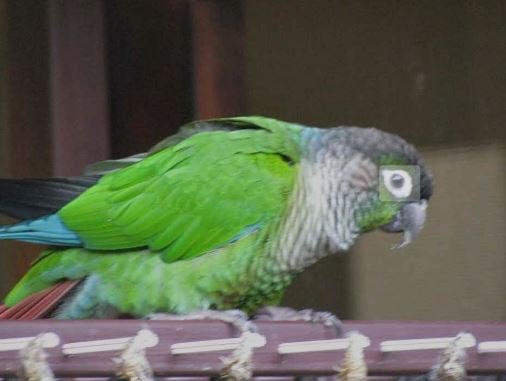
Hormonal Influences on Green Cheeked Conure Behaviors
Hormonal fluctuations on green cheeked conure behaviors play a significant role in shaping the behavior of Green Cheeked Conures, particularly during breeding seasons. Owners may observe changes in mood, activity levels, and territoriality, necessitating attentive care and environmental adjustments to support their bird’s well-being.
Understanding Screaming Green cheeked conure Behaviors
While vocalizations are natural for Green Cheeked Conures, excessive screaming may indicate underlying stress or discomfort. Identifying triggers, such as environmental changes or lack of stimulation, and providing positive reinforcement for desired behaviors help mitigate excessive vocalizations and promote a quieter living environment.
Conclusion: Green cheeked conure behaviors
In conclusion, understanding Green Cheeked Conure behavior is essential for fostering a fulfilling and harmonious relationship between owners and their feathered companions. By observing and addressing their unique needs, from nesting instincts to hormonal fluctuations, pet owners can provide a nurturing environment that supports the well-being and happiness of their beloved birds. Whether you’re a first-time conure owner or a seasoned avian enthusiast, cultivating a deeper understanding of their behavior enriches the bond between you and your feathered companion.
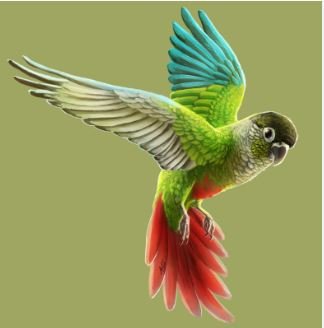
Unique FAQs: Green Cheeked Conure behaviors
- How can I encourage my Green Cheeked Conure to bond with me?
Building trust and rapport through positive reinforcement, socialization, and interactive play sessions are key to fostering a strong bond with your Green Cheeked Conure.
- Are Green Cheeked Conures noisy pets?
While they are capable of vocalizations, Green Cheeked Conures are generally considered quieter than some other parrot species. However, they may vocalize when excited, scared, or seeking attention.
- What should I do if my Green Cheeked Conure shows signs of aggression?
Identifying triggers for aggression and implementing positive reinforcement techniques, along with providing a stimulating environment and socialization opportunities, can help manage and mitigate aggressive behaviors.
- Is it normal for Green Cheeked Conures to pluck their feathers?
Feather plucking can signify stress, boredom, or underlying health issues in Green Cheeked Conures. Consulting with an avian veterinarian to rule out any medical concerns and providing environmental enrichment are essential steps in addressing this behavior.
- How can I prevent my Green Cheeked Conure from becoming jealous?
Providing equal attention, socialization, and environmental enrichment for all birds in a multi-bird household can help prevent jealousy behaviors in Green Cheeked Conures.
- How can I prevent my green cheeked conure from biting?
Biting is a natural behavior for green cheeked conures, but it can be minimized through positive reinforcement techniques. Avoid situations that may provoke biting, such as sudden movements or invading their personal space. Use positive reinforcement to reward good behavior and provide plenty of mental and physical stimulation to keep them engaged and occupied.
- What should I do if my green cheeked conure starts plucking its feathers?
Feather plucking can be a sign of various underlying issues, including stress, boredom, or medical problems. If you notice your green cheeked conure engaging in feather-plucking behavior, it’s essential to address the root cause promptly. Consult with an avian veterinarian to rule out any medical concerns and make adjustments to their environment to reduce stress and provide enrichment activities to keep them mentally stimulated.
- Do green cheeked conures require special dietary considerations?
Green cheeked conures have specific dietary needs that must be met to maintain their health and well-being. A balanced diet should consist of high-quality pellets, supplemented with fresh fruits, vegetables, and occasional treats. It’s essential to avoid feeding them foods that are toxic to birds, such as avocado, chocolate, and caffeine.
- Can green cheeked conures be trained to perform tricks?
Yes, green cheeked conures are highly intelligent and trainable birds, making them excellent candidates for trick training. With patience, consistency, and positive reinforcement techniques, you can teach them a variety of tricks, such as stepping up, target training, and even simple agility exercises.
- How do I introduce a new green cheeked conure to my existing flock?
Introducing a new green cheeked conure to an existing flock requires careful planning and gradual introductions to minimize stress and prevent aggression. Start by placing the new bird in a separate cage within the same room as your existing conure(s) to allow them to become familiar with each other’s presence without direct contact. Gradually increase the amount of supervised interaction between the birds, observing their behavior closely for signs of aggression or stress. Ensure each bird has their own space and resources to prevent territorial disputes. With patience and proper introductions, your new conure can become a valued member of your flock.
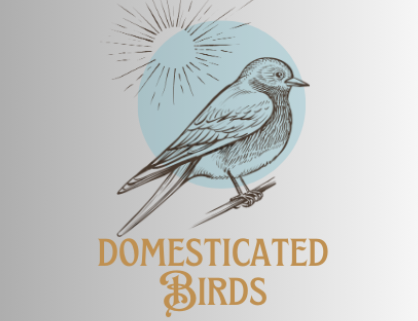

eius velit sit temporibus labore dignissimos cum est voluptatum quaerat ipsa dolorem. qui distinctio aut et dignissimos deleniti iusto id similique est saepe est nesciunt ut aut ea. deserunt alias est
fugiat non nemo architecto inventore sequi soluta adipisci sed et eius est suscipit error assumenda labore sint adipisci eaque qui. natus ullam perspiciatis reiciendis ullam dolorem porro consequatur